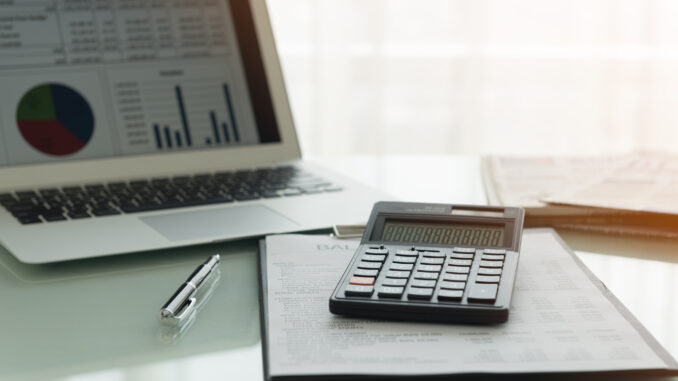
By Paul Damaren, Executive Vice President, Business Development at RizePoint - 3.27.2023
Quality and safety audits are an essential part of the restaurant industry. Every restaurant brand must conduct audits regularly and take them seriously. Done correctly, audits can help operators identify and fix any quality and safety issues before they become costly, damaging liabilities. Insights from these audits can help operators make more informed, data-driven decisions to maximize their organization’s safety, quality, compliance, and successes.
For many years, restaurants used paper checklists and Excel spreadsheets to audit. While this approach was the industry norm, it wasn’t ideal. Operators were overwhelmed by the sheer volume of data. The information wasn’t comprehensive and couldn’t provide a holistic view across the entire organization. There was no way to accurately compile and analyze data sets, and operators were unable to spot trends or patterns to make any necessary adjustments. Processes were inconsistent across the industry – and from location to location within the same organization. In short, using manual systems made the auditing process cumbersome, time-intensive, error-prone, and inefficient.
Luckily, today’s tech advances are improving the way we audit, making the process significantly more accurate, transparent, holistic, and efficient. Tech solutions make it easier to collect, compile, and analyze data – even complex information from multi-unit brands – to gather valuable insights, pinpoint issues, and identify possible threats. Collecting and analyzing real-time data allows operators to make more informed decisions to improve key performance indicators (KPIs), like optimizing operations, maximizing safety and quality, increasing productivity, boosting revenue, and driving restaurant growth.
Some of the key technologies that are revolutionizing the way food brands audit include:
- SaaS-based quality management software. Quality management software offers benefits that operators won’t get using paper methods, including real-time data analysis, error reduction, flexibility, scalability, increased collaboration, and greater transparency. SaaS-based software streamlines the auditing process, providing a broad view of an entire organization and/or drilling down by location. This allows brand leaders to observe what’s happening across an enterprise, as well as in each specific unit. SaaS software provides real-time data, which operators can’t get from manual systems. This helps brand leaders make more informed decisions to maximize safety, quality, and compliance throughout their organization.
- The cloud. Paper records make it difficult (or impossible) to collaborate, especially for larger, multi-unit brands. The cloud allows your brand to centrally store information for a single source of truth, allowing your employees to access the most updated data from anywhere at any time. Teams can work together from different locations, streamlining the process and making it faster, easier, and more accurate to manage (and interpret) data. Technologies like the cloud reduce the time, money, errors, and headaches that were common with manual auditing processes. And the cloud’s security features, like two-factor authentication, data encryption, and role-based access levels, will protect even the most sensitive data.
- AI and machine learning. Artificial intelligence can expertly manage and analyze even large quantities of data in a way that can’t be done with manual systems. Brands can use AI to dig deeper into the data to reveal more about their company, its risks, and more. Using AI and machine learning for audits provides access to richer, more detailed information and valuable insights about what’s working well and what needs to be adjusted to increase safety and compliance. Moving forward, more auditors and brands will rely on AI to analyze data, identify trends, and determine risks and opportunities.
- Predictive analytics. Predictive analytics uses advanced data analysis techniques to predict the future based on probabilities, leveraging AI and machine learning to refine those predictions. These technologies can dig deeper into the data to provide valuable insights. In addition to the typical safety and quality risks, brands now must be aware of newer, more modern risks, such as climate change, which can impact food safety. Climate change has resulted in extreme temperatures, heavy rainfalls, hurricanes, and floods. These weather events have an impact on pathogens (such as their geographic distribution), resulting in a higher number of pathogen-related foodborne illness outbreaks. Predictive analytics allow brands to determine, identify, and address potential threats before they happen to keep their businesses (and their guests) safer.
- Data visualization. Data visualization helps brand leaders easily identify trends and risks. This technology allows operators to better understand their data, gather key insights, and make adjustments, as needed, based on the data uncovered. Unlike Excel spreadsheets and clipboards, this innovative technology can help operators identify (and fix) risks, correct noncompliance issues, determine what’s causing certain patterns, and improve quality, safety, and compliance across the organization.
Just because things have always been done a certain way doesn’t mean that’s the right way to do them. Restaurants now have the opportunity to ditch the old, outdated, cumbersome manual systems and leverage technology for deeper, more robust, and more insightful information about their organization.
Tech solutions are allowing operators to see things that they could never have imagined when they worked with clipboards and paper checklists. SaaS-based quality audit software, predictive analytics, AI, machine learning, and the cloud are revolutionizing and modernizing the auditing process. Tech tools can help mitigate risks, protect brand reputation, and ensure customer safety far more successfully than old, manual systems ever could.
 Paul Damaren is Executive Vice President, Business Development at RizePoint, a technology leader in the food safety, quality management, compliance, and social responsibility space. RizePoint’s quality management software solutions help companies, including Starbucks, McDonald’s, Marriott, and more, keep brand promises through their quality, safety, and compliance efforts. Customers gather better data, see necessary actions earlier, and act faster to correct issues before they become costly liabilities.
Paul Damaren is Executive Vice President, Business Development at RizePoint, a technology leader in the food safety, quality management, compliance, and social responsibility space. RizePoint’s quality management software solutions help companies, including Starbucks, McDonald’s, Marriott, and more, keep brand promises through their quality, safety, and compliance efforts. Customers gather better data, see necessary actions earlier, and act faster to correct issues before they become costly liabilities.
Are you an industry thought leader with a point of view on restaurant technology that you would like to share with our readers? If so, we invite you to review our editorial guidelines and submit your article for publishing consideration.

